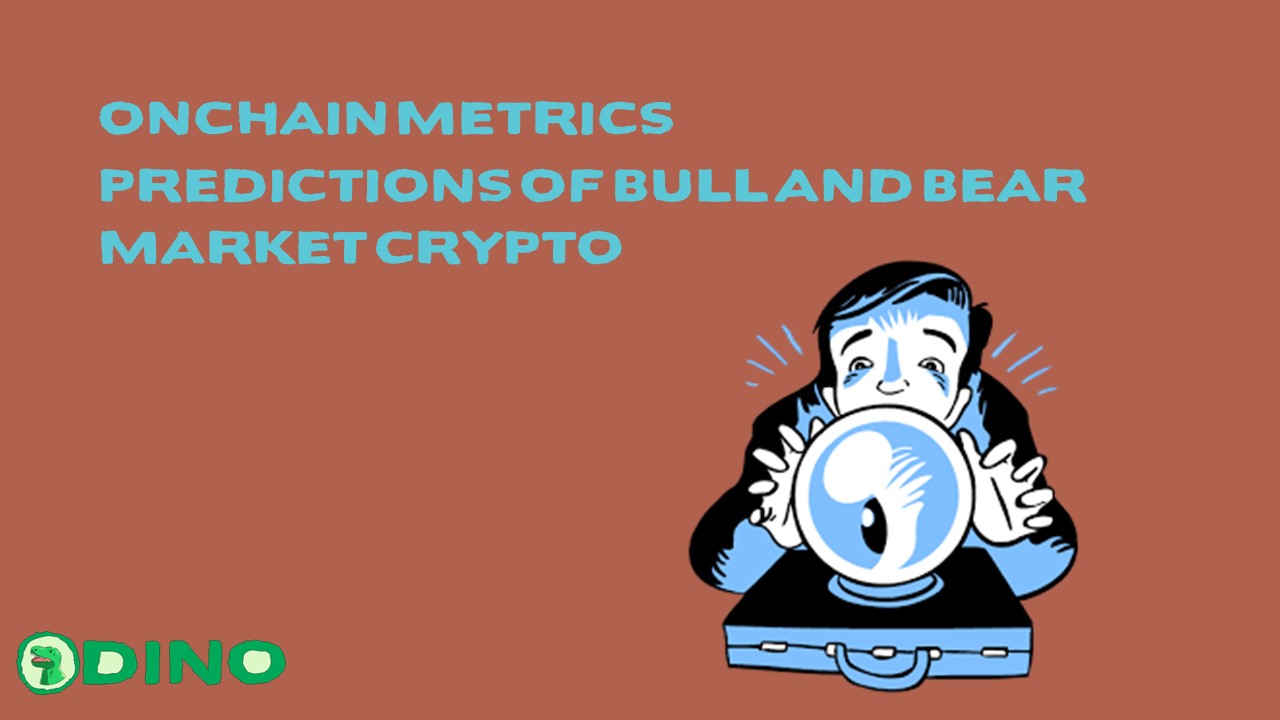Since its establishment, crypto seems to have a four-year cycle in which there is a bear phase and a bull market phase.
Phase bear is when the crypto market experiences a significant price drop.
Phase bull is when the crypto market experiences a significant price increase.
The occurrence of this phase is caused by the reference to the movement of the majority of crypto to Bitcoin.
This phase is reinforced because Bitcoin has a halving that makes the cycle four years.
The year 2021 is considered a bull phase, making many worried about the bear market phase in 2022.
So now, many are looking for ways to determine when the bear market phase begins securing funds or profits.
It should be noted that no one can predict when each phase will occur, but most analysts refer to onchain.
What Is Onchain Data and Metrics?
Onchain data is information obtained directly from transactions recorded on a public blockchain.
Onchain data is generally divided into three. The first is transaction data, such as the amount of crypto that changes hands, the sender’s and recipient’s wallet addresses, and the contents of the crypto wallet after the transaction.
The second is block recording data such as miners or validator data, miner or validator rewards, and block code recording on the blockchain.
The third is the smart contract code, such as the smart contract’s address, the smart contract, the contents of the smart contract, and the token or project tied to the smart contract.
All this data makes crypto move transparently because all transactions are visible.
This data can be used as an analytical tool, especially when dealing with whales.
But remember, even though it is transparent, all transaction owners are still unknown, so blockchain in crypto still maintains privacy.
Researchers generally reprocess on-chain data to create a metric or tool to measure price movements.
Generally, this metric will be used as an analytical tool, especially by institutions and large investors or whales, to make buying or selling decisions more mature.
One of the most well-known metrics is 2011, named Coin Days Destroyed, which helps track Bitcoin Blockchain activity at that time.
Today, on-chain metrics and data have come a long way, and hundreds of metrics are already used for crypto price analysis.
It must be known that data and metrics are two different things, whereas metrics are data that statistical and mathematical methods have processed.
So generally, institutional investors prefer to use analysis with on-chain metrics. This is also because, generally, on-chain metrics have been provided by crypto research institutions.
Three Onchain Data To Predict Bear Market
There are more than tens of on-chain metrics, but this article will use three on-chain metrics to help analyze prices, especially Bitcoin.
This analytical tool can also help locate the start of a bull and bear phase in the crypto market.
1. Liveliness
The first is Liveliness data, which is used to see the movements of large investors or whales, such as when they buy or sell.
This metric aims to be a sign of a trend or whale movement in the future and imitate it to get the best profit.
This metric indicates whether the whale is currently making an accumulation of buying or selling.
Liveliness is one of the primary metrics because this metric was developed from one of the primary metrics established in 2011, Coin Days Destroyed.
This measurement tool uses the numbers 1 to 0. When moving up close to 1 is a sign that the whales are selling, and falling close to 0 is a sign that the whales are buying.
When the data line moves sideways, it signifies that the buying and selling pressures between the whales are in balance.

In addition, this metric can be used to check the security of crypto—generally, cryptos closer to 0 with high market caps but inferior liquidity and adoption.
These signs can prove potential manipulation on the part of the team and be a sign to stay away from the crypto.
The way to take advantage of these metrics is to look at the movement of the graph. Generally, when the liveliness chart continues to rise, there are signs that the whales are starting to sell a lot, and it’s a good idea to use them also to sell.
On the other hand, when this chart is moving down, most whales are buying, so they can be used to buy too.
Because it is undeniable that the movement of the whales is the driving force of the crypto market, it is better, as a retailer, that investors follow the whales’ movements.
To see the potential start of a bear market phase, investors can pay attention to whether the chart continues to move up without correction in the long term.
When it starts to move up without a sideways or downward movement, generally, the peak of the bull phase will soon arrive, and the bear phase will begin.
2. MVRV Z-Score
Next is the MVRV Z-Score, where this metric is used to detect whether crypto is too “expensive” or “cheap” compared to the “original” value.
MVRV stands for Market Value and Realized Value, where Market Value reflects the crypto value in the market and Realized Value is the original value.
The MVRV Z-Score is an extension of the MVRV metric but in a more in-depth calculation.
This metric is easy to understand because when the graph approaches the red area, it means that the condition of crypto is already at a too high price.

An example of the implementation that is most often done is on Bitcoin, where if the Bitcoin Z-Score MVRV data graph is already in the red area, there will be a potential correction.
Conversely, in the blue area, the price is generally relatively “low” and typically can be used as a sign to start buying.
This MVRV Z-Score statistical calculation can also be used to find a possible bear phase start.
To see the potential start of a bear phase, investors can look in the longer term and pay attention to the red zone.
If it has started to reach the red zone, it’s a good idea for investors to be prepared to start selling. Although there is still potential to go higher, if you are eyeing safety, the best way is to trade while in the red.
3. RHODL Ratio
Finally, the Realized HODL Ratio or RHODL metric is an extension of the Realized Cap HODL Waves metric.
This metric is one of the most used to spot the peak of a bull phase and transition to a bear phase.
This is because the RHODL Ratio shows the calculation of the amount of a crypto stock compared to the age of the crypto itself.
This ratio uses a combination of calculations between crypto that has been in the wallet for a long time and not transacted and the overall stock in the market.

Calculations will be recapitulated in a graphical form, such as the Bitcoin example in the image above.
When the chart moves up, it is generally a sign that the market will correct.
Because this chart measures the long term, there are signs that the bull phase has peaked, and there will be a bear phase.
Generally, like the MVRV Z-Score, when the RHODL has reached the red area, a correction will occur because the movement is too excessive.
On the other hand, when it reaches the blue area, the bear phase will generally end soon, and a new bull phase may start.
Keep in mind that many more ratios and metrics can be used. But these three metrics are the most used.
More News About Crypto : NEWS
Follow our Twitter : https://twitter.com/DinoDapps




